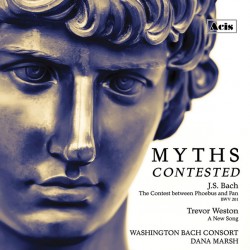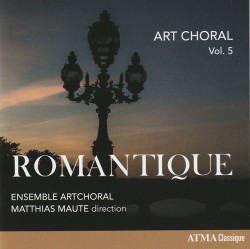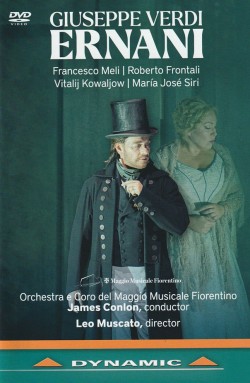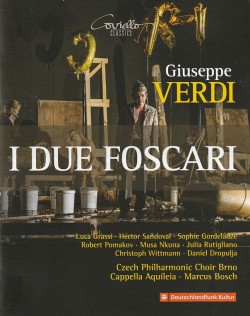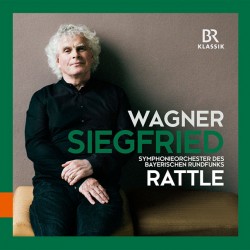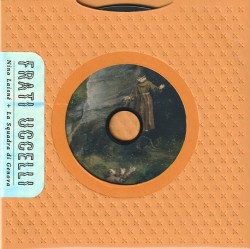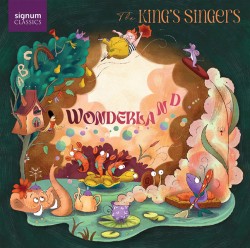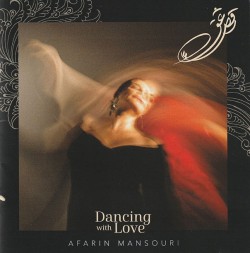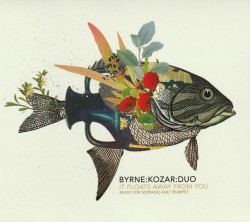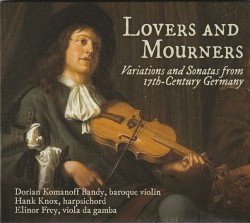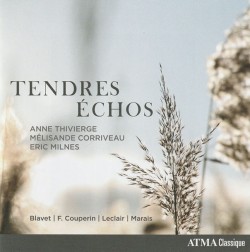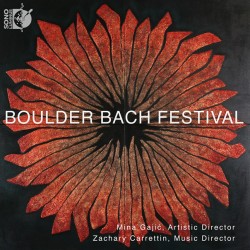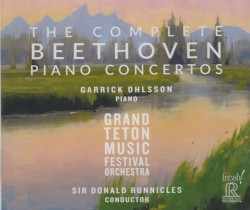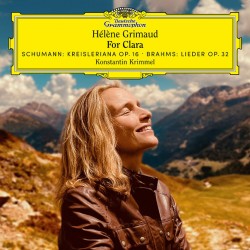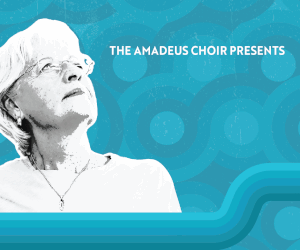Strings Attached - December 2023
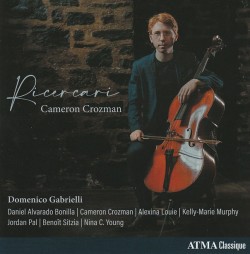 On his outstanding new solo CD Ricercari the Canadian cellist Cameron Crozman combines Domenico Gabrieli’s Seven Ricercari with a recital of contemporary pieces (ATMA Classique ACD2 2870 atmaclassique.com/en).
On his outstanding new solo CD Ricercari the Canadian cellist Cameron Crozman combines Domenico Gabrieli’s Seven Ricercari with a recital of contemporary pieces (ATMA Classique ACD2 2870 atmaclassique.com/en).
Gabrieli’s Ricercari (Italian for “to seek out”) were written in 1689 and heralded the beginning of music for unaccompanied cello. Crozman decided to rekindle this exploratory kind of music-making by commissioning six new works to play alongside the Gabrieli, adding a seventh himself. The Ricercari are strikingly original pieces, covering a wide range of keys and moods. They alternate throughout the disc with an impressive list of commissioned works by Alexina Louie, Nina C. Young, Jordan Pal, Daniel Alvarado Bonilla, Benoît Sitzia and Kelly-Marie Murphy, with Crozman’s Falling Forward, a terrific first attempt at composition, completing the line-up.
With his superb technique Crozman is equally at home in the Baroque and contemporary works.
Listen to 'Ricercari' Now in the Listening Room
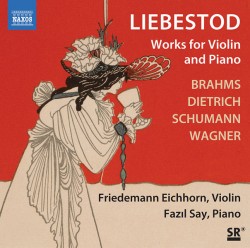 On LIEBESTOD Works for Violin and Piano pianist Fazil Say reunites with violinist Friedemann Eichhorn in a recital of mid-19th-century German works (Naxos 8.574434 naxos.com/Search/KeywordSearchResults/?q=Liebestod).
On LIEBESTOD Works for Violin and Piano pianist Fazil Say reunites with violinist Friedemann Eichhorn in a recital of mid-19th-century German works (Naxos 8.574434 naxos.com/Search/KeywordSearchResults/?q=Liebestod).
Schumann’s Violin Sonata No.1 in A Minor Op.105 from 1851 sets the stage for the whole disc with a glorious opening, Friedemann’s rich, rapturous commitment sweeping all before it, with Say matching him every step of the way. Schumann’s Drei Romanzen Op.94 from 1849, originally for oboe and piano are beautifully nuanced.
Schumann, Brahms and the latter’s pupil Albert Dietrich collaborated on the F-A-E Sonata in A Minor, written in 1853 for violinist Joseph Joachim’s birthday, the three notes not only significant in the composition but also standing for Frei aber einsam (Free but lonely), Joachim’s personal motto. World-premiere recordings of Say’s absolutely stunning transcriptions of the Act I Prelude and the Act III Liebestod from Wagner’s Tristan und Isolde complete a superb CD.
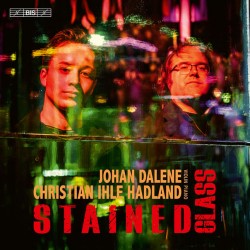 Stained Glass, the latest top-notch CD from the stellar duo of Johan Dalene and pianist Christian Hadland presents two 20th-century sonatas together with lesser-known works by Arvo Pärt, Lili Boulanger and Grażyna Bacewicz (BIS-2730 SACD allmusic.com/album/release/stained-glass-mr0006096518). The sonatas are Ravel’s Sonata in G Major from 1923-27, its jazz-influenced Blues middle movement a real delight, and Prokofiev’s 1943 Sonata No.2 in D Major Op.94a, originally for flute and piano and arranged for violin with the assistance of David Oistrakh. Described as full of sweet lyricism and playful humour, it’s given a beautifully assured reading here.
Stained Glass, the latest top-notch CD from the stellar duo of Johan Dalene and pianist Christian Hadland presents two 20th-century sonatas together with lesser-known works by Arvo Pärt, Lili Boulanger and Grażyna Bacewicz (BIS-2730 SACD allmusic.com/album/release/stained-glass-mr0006096518). The sonatas are Ravel’s Sonata in G Major from 1923-27, its jazz-influenced Blues middle movement a real delight, and Prokofiev’s 1943 Sonata No.2 in D Major Op.94a, originally for flute and piano and arranged for violin with the assistance of David Oistrakh. Described as full of sweet lyricism and playful humour, it’s given a beautifully assured reading here.
Pärt’s Fratres draws strong, sustained playing from the duo, with Boulanger’s very brief but quite lovely Nocturne from 1911 sensitively nuanced. Four short pieces by Bacewicz – Humoresque from 1953, Lullaby and Slavonic Dance, both from 1952 and the early Stained-glass window from 1932 – end an immensely satisfying disc full of outstanding playing.
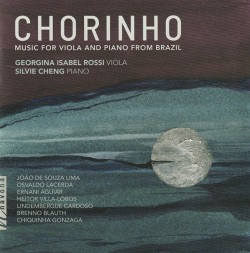 The Chilean-American violist Georgina Isabel Rossi and the Chinese-Canadian pianist Silvie Cheng are the performers on CHORINHO: Music for Viola and Piano from Brazil (navona records NV6537 navonarecords.com).
The Chilean-American violist Georgina Isabel Rossi and the Chinese-Canadian pianist Silvie Cheng are the performers on CHORINHO: Music for Viola and Piano from Brazil (navona records NV6537 navonarecords.com).
The world-premiere recording of the lovely title track by João de Souza Lima (1898-1982) opens the disc, and there are two other world-premiere recordings, both for solo viola: the three-movement Meloritmias: No.5 by Ernani Aguiar (b.1950); and the 1981 Pequeno Estudio Op.78 by Lindembergue Cardoso (1939-89), the latter one of several works that are more than merely lyrical. The 1977 Appassionato, Cantilena e Toccata by Osvaldo Lacerda (1927-2011) has a third movement described as “deceptively modern”; the three-movement 1964 Sonata by Brenno Blauth (1931-93) is “at times highly lyrical, at others aggressive.”
Cheng has Villa-Lobos’ Valse da dor as a solo, and the 1912 song Lua branca by Brazil’s first woman conductor Chiquinha Gonzaga (1847-1936) ends a disc full of fine playing.
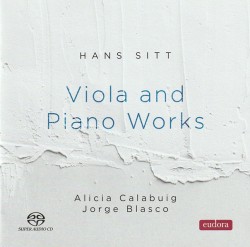 There’s more really lovely viola playing on Hans Sitt Viola and Piano Works, with the Spanish violist Alicia Calabuig ably supported by pianist Jorge Blasco (eudora EUD-SACD-2305 eudorarecords.com).
There’s more really lovely viola playing on Hans Sitt Viola and Piano Works, with the Spanish violist Alicia Calabuig ably supported by pianist Jorge Blasco (eudora EUD-SACD-2305 eudorarecords.com).
Sitt was an outstanding violinist and violist as well as a composer and teacher, spending almost the last 36 years of his life (1850-1922) as violin professor at the Leipzig Conservatory, which tied him to the Mendelssohn-Schumann-Bruch-Brahms composer tradition. The works here were mostly written between 1891 and 1919, when the post-Wagner rise of composers like Richard Strauss, Mahler and Zemlinsky rendered Sitt’s style somewhat anachronistic.
Still, these are beautifully crafted works, not particularly virtuosic and extremely attractive. Included are the Albumblätter Op.39, the 3 Fantasiestücke Op.58, the Romance Op.72, the 3 Morceaux Op.75, the Romanze Op.102/1 and the Gavotte and Mazurka Op.132. Calabuig’s warm tone is a perfect match, as is her beautifully judged vibrato – never constant, and never too wide or heavy. It’s a delightful CD.
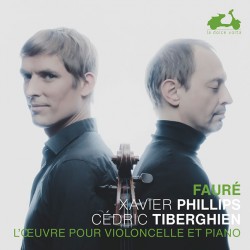 The French cellist Xavier Phillips grew up with the music of Gabriel Fauré, and on Fauré: The music for cello and piano he teams with pianist Cédric Tiberghien in a recital of the complete works (La dolce vita LDV102 ladolcevolta.com/catalogue/?lang=en).
The French cellist Xavier Phillips grew up with the music of Gabriel Fauré, and on Fauré: The music for cello and piano he teams with pianist Cédric Tiberghien in a recital of the complete works (La dolce vita LDV102 ladolcevolta.com/catalogue/?lang=en).
Both players are fully aware of the flowing, sensuous nature of the music. “To work on Fauré,” says Tiberghien, “you need to let go. . . you have to leave this music free to go its own way,” and the warm, rapturous performances do exactly that. Presented here are the Berceuse Op.16, the Élégie in C Minor Op.24, the Romance Op.69, Papillon Op.77, the Sicilienne Op.78 and the Sérénade Op.98, together with the two late Cello Sonatas No.1 in D Minor Op.109 and No.2 in G Minor Op.117.
Casals’ transcription of the song Après un rêve Op.7 No.1 completes a delightful CD.
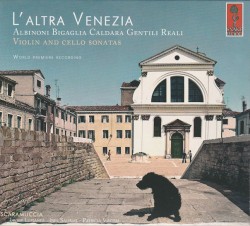 On L’altra Venezia the Scaramuccia ensemble of violinist Javier Lupiáñez, cellist Inés Salinas and harpsichordist Patrícia Vintém presents world premiere recordings of chamber music by several of the most prominent and capable Venetian composers active around 1700, roughly contemporary with Vivaldi but now little-known in comparison (Snakewood Editions SCD202301 snakewoodeditions.com).
On L’altra Venezia the Scaramuccia ensemble of violinist Javier Lupiáñez, cellist Inés Salinas and harpsichordist Patrícia Vintém presents world premiere recordings of chamber music by several of the most prominent and capable Venetian composers active around 1700, roughly contemporary with Vivaldi but now little-known in comparison (Snakewood Editions SCD202301 snakewoodeditions.com).
There are three works by Giorgio Gentili – his Cello Sonatas in A Major and G Major and his Violin Capriccio XI in B Minor – and two Violin Sonatas in B-flat Major and G Minor by Tomaso Albinoni. Single violin sonatas by Diogenio Bigaglia (his “Dresden” Sonata No.2 in C Major), Antonio Caldara (in F major) and Giovanni Battista Reali (his Sonata VII in B-flat Major) complete the disc.
Excellent booklet notes and an annotated map of Venice that details the composers’ ties to the city add to a delightful and revelatory CD.
Instrumental fantasias from the continent, predominantly for lute or keyboard were being published in England by the 1560s, and by the end of the century William Byrd had established instrumental ensemble fantasias, ranging from three to six parts as the pre-eminent chamber music in England. By 1667, however, Christopher Simpson, himself a composer of fantasias noted their “rapid decline into neglect.”
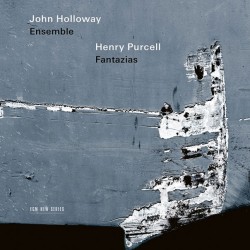 In 1680 the young Purcell wrote a set of 12, the very last ensemble fantasias to be published in England. They are presented in excellent performances on Henry Purcell Fantazias in three and four parts by the John Holloway Ensemble of violinist John Holloway, violists Monika Baer and Renate Steinmann and cellist Martin Zeller (ECM New Series 2249 485 6006 ecmrecords.com).
In 1680 the young Purcell wrote a set of 12, the very last ensemble fantasias to be published in England. They are presented in excellent performances on Henry Purcell Fantazias in three and four parts by the John Holloway Ensemble of violinist John Holloway, violists Monika Baer and Renate Steinmann and cellist Martin Zeller (ECM New Series 2249 485 6006 ecmrecords.com).
Purcell biographer Bruce Wood rightly called them “astonishing pieces. . . among the most profound and searching counterpoint of the 17th century.”
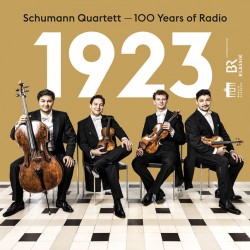 On 1923 – 100 Years of Radio the Schumann Quartett celebrates the year that saw not only the first radio broadcasts in Germany and Austria but also the First Chamber Festival of the recently formed International Society for Contemporary Music (ISCM) in Salzburg (Berlin Classics 0302968BC berlin-classics-music.com/en).
On 1923 – 100 Years of Radio the Schumann Quartett celebrates the year that saw not only the first radio broadcasts in Germany and Austria but also the First Chamber Festival of the recently formed International Society for Contemporary Music (ISCM) in Salzburg (Berlin Classics 0302968BC berlin-classics-music.com/en).
All five composers on this fascinating disc – Paul Hindemith, Alban Berg, Erwin Schulhoff, Leoš Janáček and Aaron Copland – were present at the festival. Janáček’s String Quartet No, “Kreutzer Sonata” was written a few weeks later. Hindemith’s delightfully humourous six-movement Minimax “Repertoire for Military Band” is from July 1923.
Berg’s String Quartet Op.3, written in 1910, was performed to great acclaim at the festival’s opening concert, and Schulhoff’s Five Pieces for String Quartet were written on his return to Prague from Salzburg. Copland’s short Movement for String Quartet was written the same year at the end of his studies with Nadia Boulanger, but the manuscript didn’t come to light until 1983.
Over 80 minutes of outstanding performances of truly eclectic music makes for an absolute gem of a CD.
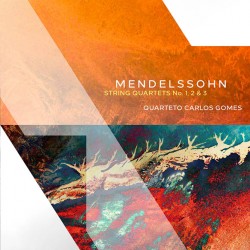 The digital release Mendelssohn String Quartets Nos.1, 2 & 3 by the Quarteto Carlos Gomes is the first volume in a proposed complete set of the composer’s quartets on the Brazilian label Azul Music (AMDA1887 azulmusic.com.br).
The digital release Mendelssohn String Quartets Nos.1, 2 & 3 by the Quarteto Carlos Gomes is the first volume in a proposed complete set of the composer’s quartets on the Brazilian label Azul Music (AMDA1887 azulmusic.com.br).
All three works here – the String Quartets No.1 in E-flat Major Op.12, No.2 in A Major Op.13 and No.3 in D Major Op.44 No.1 – were previously available as individual digital releases. I can’t find too much about the performers, but a full, resonant recording complements some committed and passionate playing on a very satisfying release.
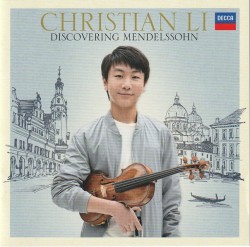 Discovering Mendelssohn is the second album from the young violinist Christian Li, who won the 2018 Yehudi Menuhin International Competition for Young Violinists – at age He’s still only 15 and displays quite remarkable talent (Decca 485 3987 deccaclassics.com/en/artists/christian-li).
Discovering Mendelssohn is the second album from the young violinist Christian Li, who won the 2018 Yehudi Menuhin International Competition for Young Violinists – at age He’s still only 15 and displays quite remarkable talent (Decca 485 3987 deccaclassics.com/en/artists/christian-li).
At the heart of the CD is the Violin Concerto in E Minor Op.64, with Sir Andrew Davis and the Melbourne Symphony Orchestra, an engaging performance perhaps with not quite the emotional depth he will surely find later. The rest of the CD comprises four short pieces by Mendelssohn – On Wings of Song with harpist Yinuo Mu, Venetian Gondola Song with guitarist Xuefei Yang, Spring Song with pianist James Baillieu and the dazzling Rondo capriccioso Op.14 with pianist Laurence Matheson – and three by his contemporaries or influences: Mozart’s Violin Sonata in E Minor K304 with Baillieu; Schubert’s Serenade with Matheson; and Bach’s Erbarme dich, mein Gott with cellist David Berlin.
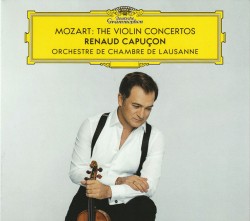 In the booklet notes for the 2CD set MOZART – The Violin Concertos (Deutsche Grammophon 4864067 deutschegrammophon.com/en/artists/renaud-capucon) featuring Renaud Capuçon and his Orchestre de Chambre de Lausanne, Capuçon makes an interesting point about the youthful concertos, that over-analyzing them can be counterproductive: “Mozart wrote these pieces extremely quickly; they quite literally flowed from his pen. And as a soloist you need to be able to communicate this rapid flow and this lightness.”
In the booklet notes for the 2CD set MOZART – The Violin Concertos (Deutsche Grammophon 4864067 deutschegrammophon.com/en/artists/renaud-capucon) featuring Renaud Capuçon and his Orchestre de Chambre de Lausanne, Capuçon makes an interesting point about the youthful concertos, that over-analyzing them can be counterproductive: “Mozart wrote these pieces extremely quickly; they quite literally flowed from his pen. And as a soloist you need to be able to communicate this rapid flow and this lightness.”
That shouldn’t imply any absence of depth and insight, though, and Capuçon finds a perfect balance in beautiful performances of the five concertos plus the Rondo in C Major K373 and the Adagio in E Major K261, both written as alternative movements for violinist Antonio Brunetti.
Capuçon says that he has to be happy and contented when performing Mozart – “only then does it really work.” Which it certainly does here.
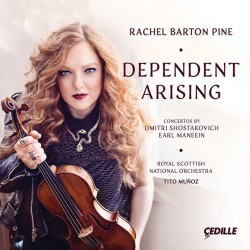 Dependent Rising, the latest CD from violinist Rachel Barton Pine with Tito Muñoz and the Royal Scottish National Orchestra explores connections between classical music and heavy metal in concertos by Dmitri Shostakovich and the American violinist/composer Earl Maneein, both concertos openly confronting pain and suffering (Çedille CDR 90000 223 cedillerecords.org).
Dependent Rising, the latest CD from violinist Rachel Barton Pine with Tito Muñoz and the Royal Scottish National Orchestra explores connections between classical music and heavy metal in concertos by Dmitri Shostakovich and the American violinist/composer Earl Maneein, both concertos openly confronting pain and suffering (Çedille CDR 90000 223 cedillerecords.org).
Both Barton Pine and Maneein have been heavy metal devotees since their early teens, with the former often including her own arrangements of metal songs in her performances. She commissioned the solo piece Metal Organic Framework from Maneein in 2014; Muñoz was at the premiere and consequently commissioned the concerto.
It’s not the best recording of the Shostakovich Concerto No.1 in A Minor Op.77 available, but the CD stands or falls on the strength of the heavy metal-influenced Maneein concerto that gives the CD its title. It’s a three-movement work of remarkable impact and resonance, with tough cadenzas in the first and predominantly lyrical second movements, and a real “thrash” finale.
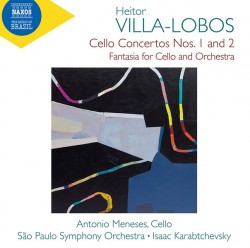 Cellist Antonio Meneses is the excellent soloist on Heitor VILLA-LOBOS Cello Concertos Nos.1 and 2, the latest release in the Naxos Music of Brazil series. Isaac Karabtchevsky conducts the São Paulo Symphony Orchestra (Naxos 8.574531 naxos.com/CatalogueDetail/?id=8.574531).
Cellist Antonio Meneses is the excellent soloist on Heitor VILLA-LOBOS Cello Concertos Nos.1 and 2, the latest release in the Naxos Music of Brazil series. Isaac Karabtchevsky conducts the São Paulo Symphony Orchestra (Naxos 8.574531 naxos.com/CatalogueDetail/?id=8.574531).
The Cello Concerto No.1 Op.50 from 1915 was the composer’s first major orchestral work, the eclectic style suggesting a composer still trying to find his own individual voice. It’s an appealing and virtuosic work full of youthful energy. The Cello Concerto No.2 from 1953 is a four-movement work commissioned by Aldo Parisot for his Carnegie Hall debut in February 1955. Lushly scored, it apparently suggests “man’s cosmic solitude when facing the vastness of the natural world.”
The final work on the CD is the three-movement Fantasie for Cello and Orchestra from 1945, when the composer’s reputation was at its peak and he was able to give free rein to his imagination in flowing style.
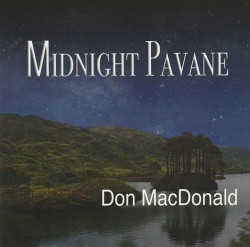 The Canadian guitarist Don MacDonald says that the COVID pandemic and lockdown afforded him an enormous amount of time to concentrate on composition, and his consequent search for inspiration is reflected in the three pieces on his new classical guitar CD Midnight Pavane (www.donmacdonaldmusic.ca).
The Canadian guitarist Don MacDonald says that the COVID pandemic and lockdown afforded him an enormous amount of time to concentrate on composition, and his consequent search for inspiration is reflected in the three pieces on his new classical guitar CD Midnight Pavane (www.donmacdonaldmusic.ca).
Hex Suite is a set of four movements – including the title track – based on a six-note scale, while Night Visions is a group of seven pieces, alternating in tempo, that use varying moods and textures. Zephyrs, the longest and most interesting piece, was inspired by Britten’s Nocturnal after John Dowland, a theme and variations work where the theme unfolds at the end of the piece, and not at the beginning.
The compositions employ standard classical guitar techniques and have a real sense of exploration. The playing is beautifully clean, and perfectly captured by the recording engineer, the legendary Anton Kwiatkowski.
Listen to 'Midnight Pavane' Now in the Listening Room
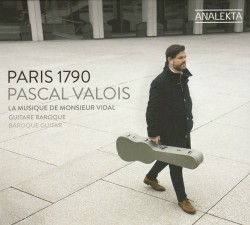 Baroque guitarist Pascal Valois’ new CD, PARIS 1790 – La Musique de Monsieur Vidal features music by a guitarist/composer whose first name, date and place of birth remain unknown (he died in 1803), but who was apparently one of the most important guitar figures in late-18th-century Europe and is credited with writing the first guitar concerto (Analekta AN 2 9196 analekta.com/en).
Baroque guitarist Pascal Valois’ new CD, PARIS 1790 – La Musique de Monsieur Vidal features music by a guitarist/composer whose first name, date and place of birth remain unknown (he died in 1803), but who was apparently one of the most important guitar figures in late-18th-century Europe and is credited with writing the first guitar concerto (Analekta AN 2 9196 analekta.com/en).
It’s presumably that concerto, a short two-movement work that opens the CD. Violinist Jacques-André Houle is the partner on the Guitar Sonata with Violin Accompaniment WoO and on two Duos for Guitar and Violin Opp.24 No.3 and 28 No.5, and Jean-Guy Côté the cellist on the Guitar Sonata with Basso Continuo. Four solo works complete the disc.
Valois plays a Baroque-style guitar with five courses double-strung in unison, which he feels is best-suited to the music, especially the non-traditional thumb and index finger tremolos which he handles superbly.


